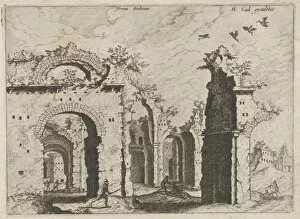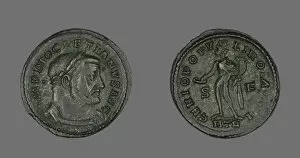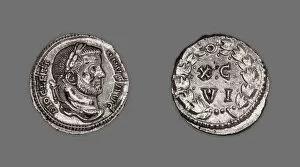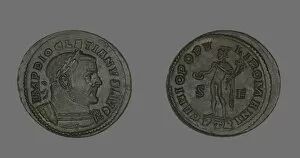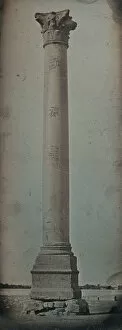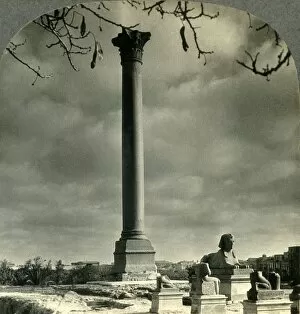Emperor Diokletian Collection
Emperor Diocletian, also known as Gaius Aurelius Valerius Diocletianus, was a prominent figure in Roman history
For sale as Licensed Images
Choose your image, Select your licence and Download the media
Emperor Diocletian, also known as Gaius Aurelius Valerius Diocletianus, was a prominent figure in Roman history. His reign marked a significant period of political and administrative reforms that aimed to stabilize the empire. One of the most notable achievements associated with Emperor Diocletian is the construction of The Baths of Diocletian. These grand public baths were not only an architectural marvel but also served as a symbol of his power and opulence. Johannes van Doetecum I and Lucas van Doetecum beautifully captured these ruins in their 1562 artwork. Coins portraying Emperor Diocletian provide us with valuable insights into his rule. From the unknown creators' masterpieces like the Coin Portraying Emperor Diocletian from 302-303 or Argenteus (Coin) issued by either him or Maximianus in 300, we can observe his regal presence and authority depicted on these ancient currencies. Pompey's Column in Alexandria stands tall as another testament to Emperor Diocletian's influence. Joseph Philibert Girault De Prangey's 1842 depiction showcases this landmark that sailors relied upon for navigation purposes. Additionally, recently unearthed Sphinxes add an intriguing element to its historical significance. Artistic representations such as "Diokletian" painted by an unknown artist in 1890 or Josse Lieferinxe's late 15th-century masterpiece "Saint Sebastien before the Emperors Diokletian and Maximilian" further immortalize Emperor Diocletian's image throughout time. The gold coin dating back to the third century BC serves as a reminder of his enduring legacy even centuries after his reign ended. Similarly, coins like Follis (298-299) or Antoninanus (290-291) portray him with great detail, showcasing his distinctive features and imperial attire.


